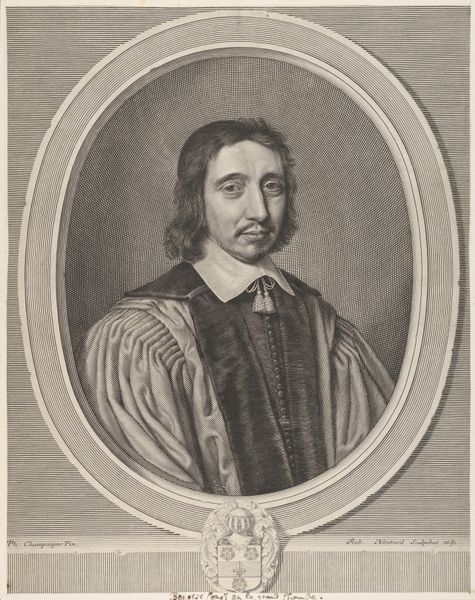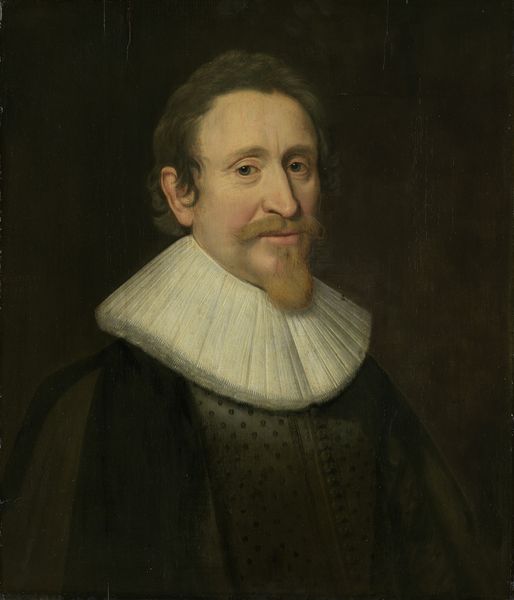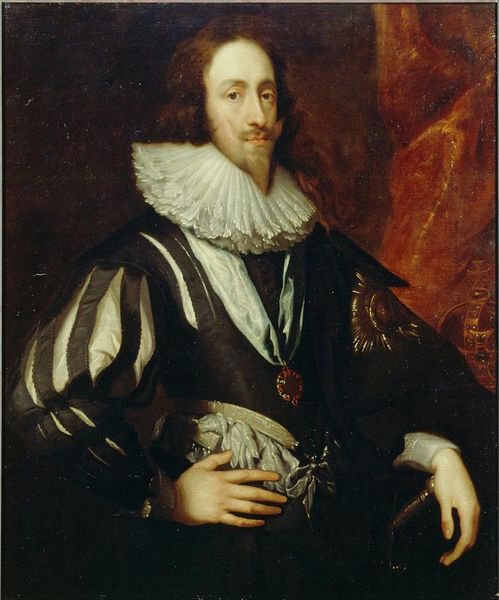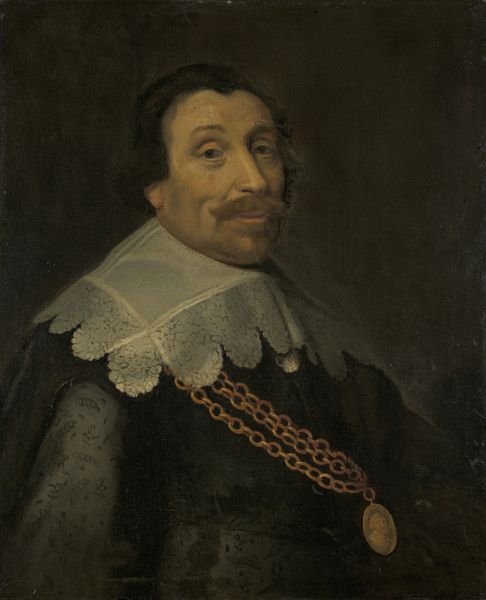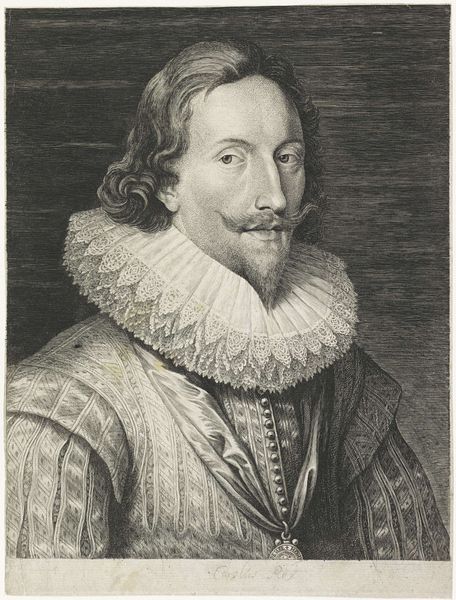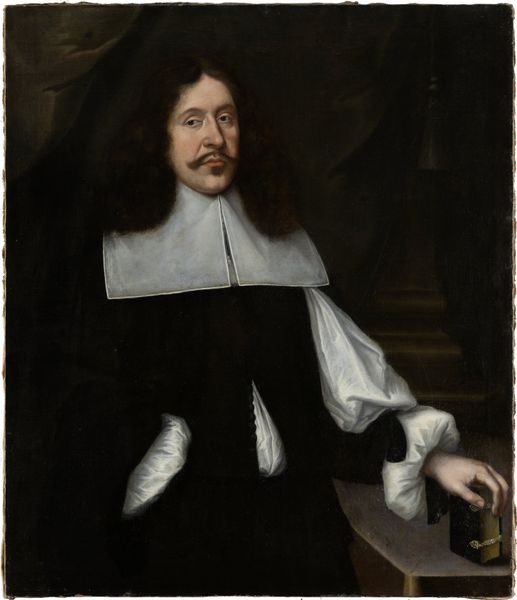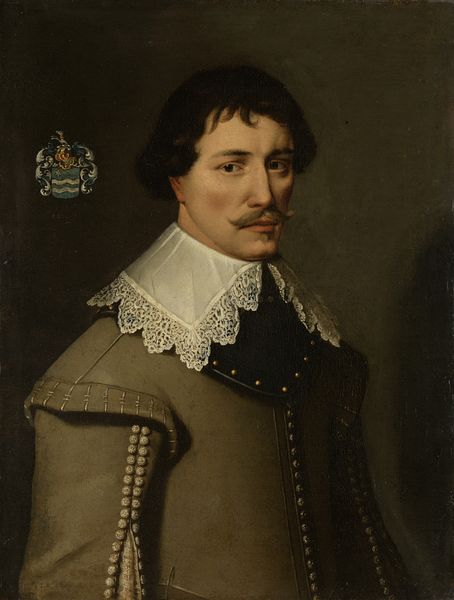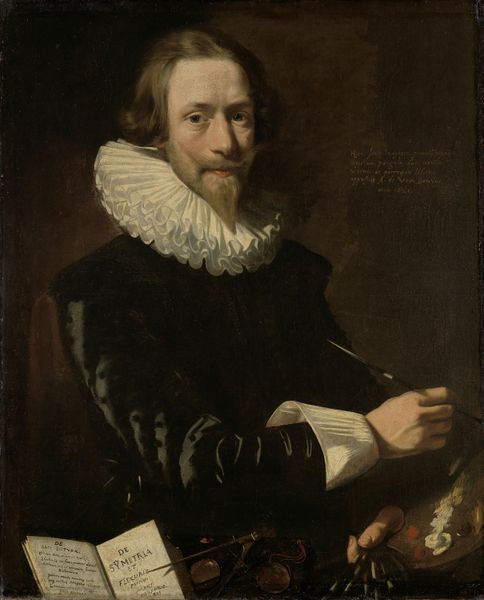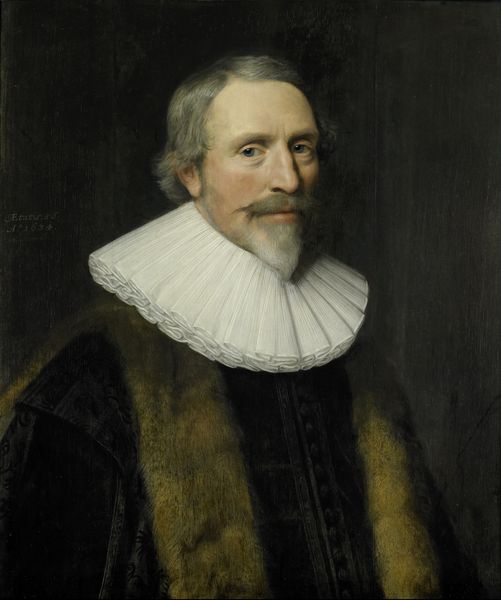
oil-paint
#
portrait
#
baroque
#
portrait image
#
dutch-golden-age
#
portrait
#
oil-paint
#
figuration
#
portrait reference
#
portrait head and shoulder
#
portrait drawing
#
history-painting
#
facial portrait
#
portrait art
#
fine art portrait
#
celebrity portrait
#
digital portrait
Copyright: Public domain
Curator: Before us, we have Gerard van Honthorst’s "Portrait of Jacob De Witt," created in 1639. The piece exemplifies the Dutch Golden Age style, employing oil paint. Editor: My first impression is… calculated. The man's direct gaze and slight smirk give the sense that he's acutely aware of his own power and status, or perhaps, his secrets. Curator: Absolutely. Jacob De Witt was a significant political figure in the Netherlands. It’s essential to consider the burgeoning Dutch Republic at the time, a period of tremendous economic and social upheaval where men such as De Witt sought power. Editor: Notice how Honthorst positions De Witt with his head slightly turned, catching the light, which lends a certain dynamism to his face. The white lace collar against the stark black robes is particularly striking, a recurring motif indicating respectability in the iconography of the period. It emphasizes his moral standing, even in the midst of political maneuverings. Curator: This stark contrast in colors also serves a more symbolic purpose. The rigid dark clothing signifies his place in the societal power structure, while the soft, ruffled lace hints at his humanity, his personal identity behind his public role. I think it makes him, in essence, more interesting. Editor: The almost theatrical pose – shoulder turned, the subtle arrogance in his expression – it’s very much in line with the Baroque style, designed to project grandeur and self-assurance. But I detect, and maybe it’s just my interpretation, an undercurrent of anxiety in those eyes. A slight vulnerability? Curator: It’s in the ambivalence where we find complexity and richness. Portraits of this era often present figures as unwavering pillars of power. That hint of anxiety undermines the notion of absolute power, revealing the pressures and burdens weighing upon him, especially considering the tumultuous times he was living in. Editor: Studying the imagery, one almost has to wonder, what were the unspoken social rules and norms governing Dutch society at the time? To understand this man, Jacob De Witt, is to try to decipher those cultural codes. Curator: Indeed. Looking at this piece, one is led down so many different historical pathways. Editor: Yes, Honthorst really presents us with a potent symbol, both representative of his time, and revealing of the complexities of identity in this portrait.
Comments
No comments
Be the first to comment and join the conversation on the ultimate creative platform.

